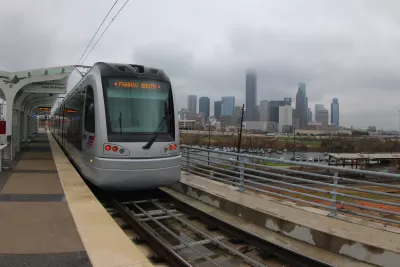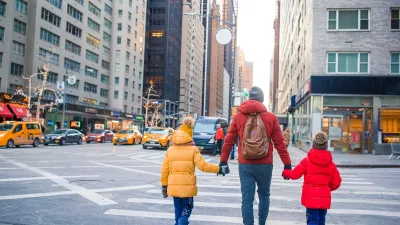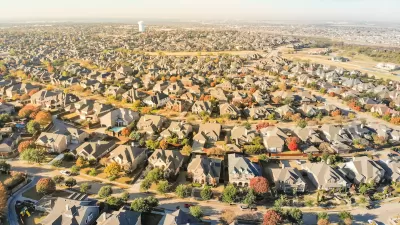Will sprawling cities stay sprawled? Starting in their downtowns, some Sun Belt behemoths are embracing denser, more walkable forms.

Home to about one-sixth of the U.S. population, "sprawling cities" are small regional centers that ballooned out over the past 60 years into distinctly unwalkable suburban metropolises.
For CNU, Robert Steuteville identifies 25 such locations, characterized by their auto-dependent development patterns since 1950. "Because of the infrastructure and built patterns since 1950, only 6 percent of residents walk, bike, or take transit to work in sprawling cities. Because they are so automobile dependent, they impose much higher transportation costs on residents."
Located in the Sun Belt (and elsewhere in the nation's southern half), "sprawling cities are diverse places—about a third of the population is Hispanic. Average household income tops $54,000, which is about the same as traditional cities. Crime is relatively low in sprawling cities, although death and injury by automobile is higher than traditional cities."
Steuteville points to some signs that despite their unwieldy infrastructure, these cities are becoming more traditionally urban. "Downtowns of sprawling cities were among the first to revive. A prime example is Fort Worth, which rebuilt a walkable downtown over the course of two decades, culminating in the fabulous Sundance Square." Economically vibrant and affordable, "sprawling cities have the market strength to rebuild [old malls] as mixed-use centers."
FULL STORY: Sprawling cities are becoming more urban

Alabama: Trump Terminates Settlements for Black Communities Harmed By Raw Sewage
Trump deemed the landmark civil rights agreement “illegal DEI and environmental justice policy.”

Planetizen Federal Action Tracker
A weekly monitor of how Trump’s orders and actions are impacting planners and planning in America.

The 120 Year Old Tiny Home Villages That Sheltered San Francisco’s Earthquake Refugees
More than a century ago, San Francisco mobilized to house thousands of residents displaced by the 1906 earthquake. Could their strategy offer a model for the present?

In Both Crashes and Crime, Public Transportation is Far Safer than Driving
Contrary to popular assumptions, public transportation has far lower crash and crime rates than automobile travel. For safer communities, improve and encourage transit travel.

Report: Zoning Reforms Should Complement Nashville’s Ambitious Transit Plan
Without reform, restrictive zoning codes will limit the impact of the city’s planned transit expansion and could exclude some of the residents who depend on transit the most.

Judge Orders Release of Frozen IRA, IIJA Funding
The decision is a victory for environmental groups who charged that freezing funds for critical infrastructure and disaster response programs caused “real and irreparable harm” to communities.
Urban Design for Planners 1: Software Tools
This six-course series explores essential urban design concepts using open source software and equips planners with the tools they need to participate fully in the urban design process.
Planning for Universal Design
Learn the tools for implementing Universal Design in planning regulations.
Clanton & Associates, Inc.
Jessamine County Fiscal Court
Institute for Housing and Urban Development Studies (IHS)
City of Grandview
Harvard GSD Executive Education
Toledo-Lucas County Plan Commissions
Salt Lake City
NYU Wagner Graduate School of Public Service




























